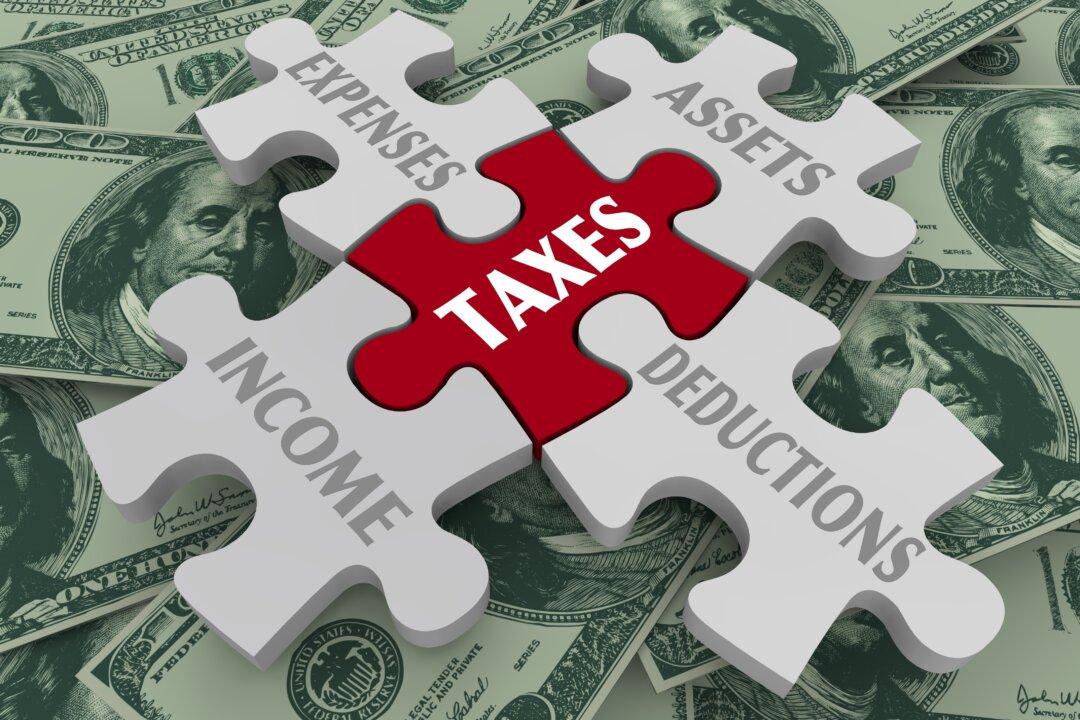Student loan debt in the United States today is about $1.74 trillion. About 90 percent is federal student loan debt, while the rest is private.
In the past academic year, more than half of the bachelor’s degree students who attended four-year schools had student loans averaging almost $30,000, according to the nonprofit College Board. The cost of college has doubled over the past four decades, with student loan borrowing rising along with it, as 42.2 million Americans currently hold federal student loan debt.
Total student debt in the United States tripled in the past 15 years, from $619 billion in the first quarter of 2008 to $1.74 trillion in the second quarter of 2024, an increase of more than 80 percent, according to the Federal Reserve.
Given that debt has risen significantly as average wages have fallen, borrowers are struggling to repay their student loans in many cases. This burden has compromised pursuing other life goals, such as starting a family or buying a home. Delinquencies and defaults on student loans were becoming common—that is until the pandemic student loan hiatus.
Impact of Student Loan Payment Hiatus
In early 2020, the pandemic moved the Department of Education to initiate many student loan relief measures. Many of these measures have been extended multiple times, and the last will be sunsetting as after a more than three-year pause, borrowers had to restart paying their federal student loan bills in October.The Biden administration added one final measure, saying it would provide a 12-month “on-ramp” period for borrowers reentering payment. Borrowers will not be reported to the credit bureaus, considered in default, or referred to collection agencies for late payments during the on-ramp period. Since the pandemic, nonpayment of student loans has not affected credit in terms of Fair Isaac Corporation (FICO) scores, and loan statistics reflect all the loan payments as “current,” distorting the real picture of the debt and repayment that is set to completely resume.
Student Loan Forgiveness Programs
The Biden administration has canceled billions of dollars in education debt. Here’s a breakdown of that debt relief:- $74 billion for more than 1 million borrowers via the Public Service Loan Forgiveness program
- $5.5 billion for 414,000 enrolled in the SAVE Plan
- $51 billion through income-driven adjusted repayments for more than 1 million borrowers
- $28.7 billion for more than 1.6 million borrowers whose colleges abruptly closed or students who were defrauded by their college
- $16.2 billion for more than 572,000 borrowers totally and permanently disabled
Qualifications for Student Loan Forgiveness
To determine your eligibility for student loan forgiveness, several factors are considered, including employment, the type of loans you have, your student loan repayment history, and others. To determine your eligibility, use tools such as the Loan Simulator on the Federal Student Aid website.Here are some common programs and their eligibility criteria:
- Income-Driven Repayment (IDR) plans: An IDR plan will allow qualifying payments for 20–25 years, with potential forgiveness for any remaining balance.
- Public Service Loan Forgiveness: If you are working in a government or nonprofit organization and have made 120 qualifying monthly payments, you may qualify.
- Teacher Loan Forgiveness: If you’re a teacher in a low-income school for at least five consecutive years, you could be eligible for up to $17,500 in forgiveness.
- Borrower Defense to Repayment: If your school misled you or you suffered from school misconduct, you could be eligible for forgiveness.
- Closed School Discharge: You could be eligible for forgiveness if the school you attended closed while you were enrolled or soon after you withdrew.
- Total and Permanent Disability Discharge: If you are totally and permanently disabled, loan forgiveness can be sought.
Tax Implications of Student Loan Forgiveness
Student loan forgiveness is not federally taxable income. However, there may be state taxes on forgiven balances. The American Rescue Plan Act specifically exempts student loan forgiveness from federal taxation until the end of 2025.States that will collect income taxes on student loan forgiveness include Indiana, Mississippi, North Carolina, and Wisconsin, according to analysis from the Tax Foundation, a tax policy think tank based in Washington. Also, a handful of other states are tentatively planning to tax any forgiven student loan debt unless their legislatures take specific measures to prevent it.
Obtaining a Student Loan, Dealing With Issues
The Free Application for Federal Student Aid (FAFSA) form assesses your eligibility for financial support based on income and taxes paid in 2022, which is used for the base year for 2024–25 eligibility. To apply for financial aid, complete the FAFSA form before the deadline, then renew it each school year. If you’re applying for financial aid for the 2024–25 school year, file a 2024–25 FAFSA form and verify the award year with your school.Loan Interest Rates
A good student loan interest rate depends on the market and other factors, but here are some reference points. Federal student loans currently have interest rates within a range of 6.53–9.08 percent. The best private student loan rates are 4.99 percent APR but can range as high as more than 16.99 percent.Student Loan Issues?
To file a complaint with the Department of Education (DOE), visit the DOE’s Office for Civil Rights (OCR) Complaint Assessment System site and file an electronic complaint form, or file a complaint by using the PDF complaint form. You can learn how to file a discrimination or retaliation complaint with the OCR here.The Epoch Times copyright © 2024. The views and opinions expressed are those of the authors. They are meant for general informational purposes only and should not be construed or interpreted as a recommendation or solicitation. The Epoch Times does not provide investment, tax, legal, financial planning, estate planning, or any other personal finance advice. The Epoch Times holds no liability for the accuracy or timeliness of the information provided.








